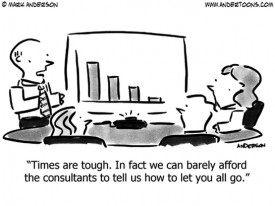 There’s been a ton of discussion in one of my Linkedin groups about the “Three Ps” of marketing. Some of it has been practical and some pretty esoteric. Some pretty bland and some pretty heated. Some to the point and some veering pretty far off. Even to the point of introducing the Three As, the Three Bs, the Three Cs, etc., with the possibility of twenty six Three Things (using the English alphabet. So I figure I can put my two cents in for the Three Ms — Markets, Messages and Media. Because this is where I concentrate with my clients when it comes to marketing strategy development.
There’s been a ton of discussion in one of my Linkedin groups about the “Three Ps” of marketing. Some of it has been practical and some pretty esoteric. Some pretty bland and some pretty heated. Some to the point and some veering pretty far off. Even to the point of introducing the Three As, the Three Bs, the Three Cs, etc., with the possibility of twenty six Three Things (using the English alphabet. So I figure I can put my two cents in for the Three Ms — Markets, Messages and Media. Because this is where I concentrate with my clients when it comes to marketing strategy development.
If you participate in networking groups you’ve no doubt heard the advice about providing your fellow participants with fairly specific targets in response to the “Who is a good lead for you?” question. The idea here is to avoid “spray and pray” marketing by trying to sell to everyone whether they might need or want your product or service or not.
You’ll need to hone your messages to resonate with their needs and wants if you expect to get them to respond to your calls to action. What problems can you solve for them? How much time or money can you save them? What painful situations can you extricate them from or prevent from happening with your offering. What will they get if they do what you ask? What’s the benefit that’s in it for them?
If you pay attention to the demographics of your real target market niches, you’ll use the right media to try to get their attention with your tailored messages. That means avoiding the “tactic of the day” trap, or throwing darts in the dark as I described it in an earlier blog post. How many 70 year old people shopping for cemetery plots are doing that on their iPhones or Android smart phones? Do you really need that mobile app to reach them or is there a more appropriate and more effective media for doing so?
Markets, messages and media. Three critical “Ms” that are central to your marketing strategies. Have you reviewed yours lately? Do they still fit with what you are trying to do, who you are trying to reach and how you are reaching them or could they use a fresh look from your advisory board or an outside consultant?
Give that some thought. And please let me know what you think about what I’ve said as well. Thanks for reading and I look forward to receiving your comments.







